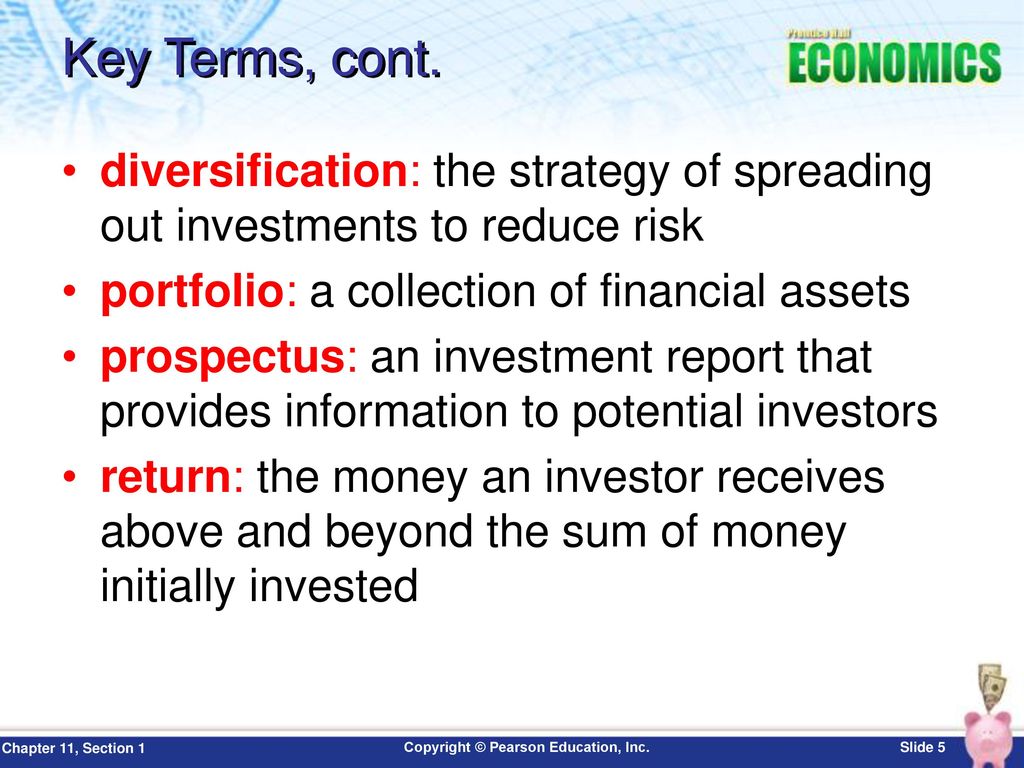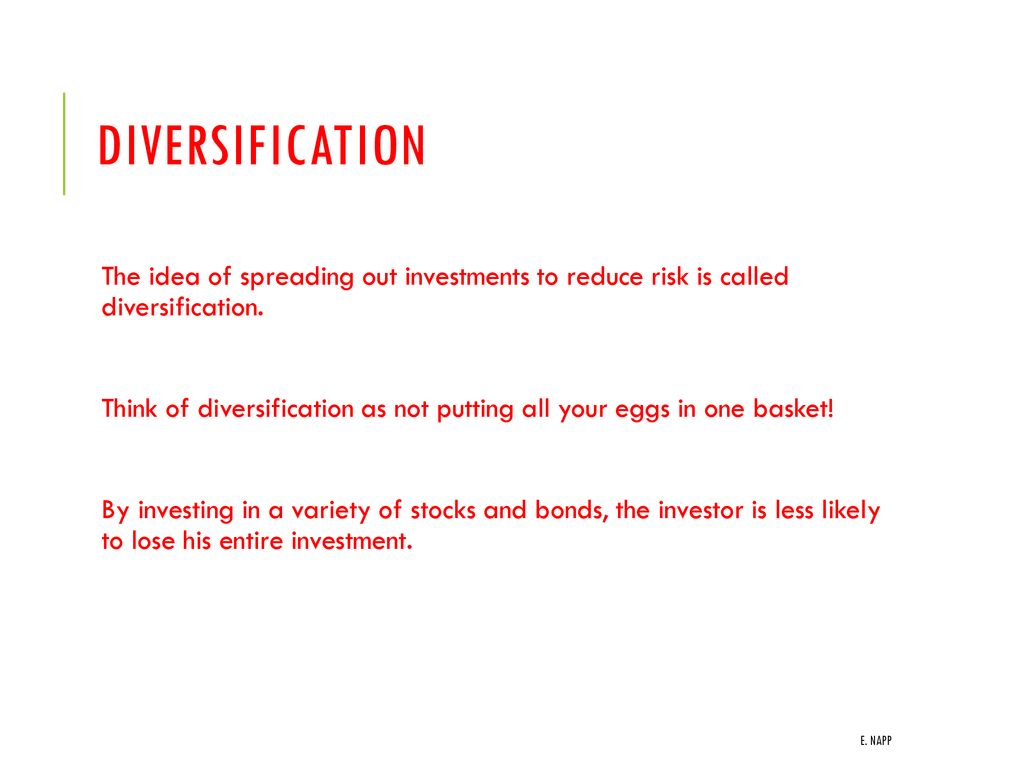
For more granular advice on what specifically to invest in, hire an investment advisor by the hour. Money Crashers. Move money into defensive sectors, bonds, or precious metals, or for that matter, you can sit on large amounts of cash if you get spooked while equity prices are still relatively high.
Popular Articles
Regardless of how you choose to invest your money, from trading it in the share market to keeping it tucked away in a bank account, there are risks involved. This guide will take you through the different strategies you can invesfments to reduce your risk when investing. Investment risk is the risk of financial loss. All investments carry some level of investment risk. When you decide to invest your money, it’s never guaranteed that investmdnts make a return on that money. In fact, you could even stand to lose the money you initially invested and sometimes more, if you’re trading products like CFDs.
Prioritizing Your Financials Properly

Learn about finance, stock market, ratio analysis and investment banking. Post a Comment. Finance Learners. Learn how to reduce investment risk and increase your return through the following ways and strategies: 1 Reducing risk through diversification. Invest in different types of stocks instead of buying only one company’s stock. Such action can protect you from industry risk, whereby all companies in a certain industry experience a major downturn.
Recent Stories
Diversification is a technique that reduces risk by allocating investments among various financial instruments, industries, and other categories. Most investment professionals agree that, although it does not guarantee against loss, diversification is the most important component of reaching long-range financial goals while minimizing risk.
Here, we look at why this is true and how to accomplish diversification in your portfolio. Investors confront two main types of risk when investing. Investmfnts first is undiversifiable, which is also known as systematic or market risk. This type of risk is associated investmejts every company. Common causes include inflation rates, exchange ratespolitical instability, war, and interest rates.
This type of risk is not specific to a particular company or industry, and it cannot be eliminated or reduced through diversification—it is just a risk spreading out investments to reduce risk must accept. Systematic risk affects the market in its entirety, not just one particular investment vehicle or industry.
The second type of risk is risl. This risk is also known as unsystematic risk and is specific to a company, industry, market, economy, or country. It can be reduced through diversification. The most riak sources of unsystematic risk are business risk and financial risk.
Thus, the aim is to invest in various assets so they will not all investmenrs affected the same way by market events. Let’s say you have a portfolio of only airline stocks. If it is announced that airline pilots are going on an indefinite strike and that all flights are canceled, share prices of airline stocks will drop. That means your portfolio will experience a noticeable investmwnts in value. If, however, you counterbalanced the airline ibvestments stocks with a couple of railway stocks, only part of tisk portfolio would be affected.
In fact, there is a good chance the railway stock prices would climb, as passengers turn to trains as an alternative form of transportation. But, you could diversify even further because there redue many risks that affect both rail and air because each is involved in transportation.
An event that reduces any form of travel hurts both types of companies. Statisticians, for example, would say that rail and air stocks have a strong spreaving. Therefore, you would want to diversify across the board, not only different types of companies but also reducce types of industries.
The more uncorrelated your stocks are, the better. It’s also important to diversify among different asset classes. Different assets such as bonds and stocks will not react in the same way to adverse events. A combination of asset classes will reduce your portfolio’s sensitivity to market swings.
And finally, don’t forget location, location, location. Diversification also means you should look for investment opportunities beyond your own geographical borders. After all, volatility in the United States may not affect stocks and bonds in Europe, so investing in that part of the world may minimize and offset the risks of investing at home. While there are many benefits to diversification, there may be some downsides as.
It may be somewhat cumbersome to manage a diverse portfolio, especially if you have multiple ro and investments. Secondly, it can put a dent in your bottom line. Not all investment vehicles cost the same, so buying and selling may be expensive—from transaction fees to brokerage charges. And since higher risk comes with higher rewards, you may end up limiting what you come out. There are also additional types of diversification, and many synthetic investment products have been created to accommodate iut risk tolerance levels.
However, these products can be very complicated and are not meant to be created by beginner or small investors. For inveztments who have less investment experience, and do not have redce financial backing to enter into hedging activities, bonds are the most popular way to diversify against the stock market.
Unfortunately, even the best analysis of a company and its financial statements cannot guarantee it won’t be a losing investment. Diversification won’t prevent a loss, but it can reduce the impact of fraud and bad information on your portfolio.
Obviously, owning five stocks is better than owning one, but there comes a point when spreadnig more stocks to your portfolio ceases to make a difference. There is a debate over how many stocks are needed to reduce risk while maintaining a high return. The most conventional view argues that an investor can achieve optimal diversification with only 15 to 20 stocks spread across various industries.
Diversification can help an investor manage risk and reduce the volatility of an asset’s price movements. Remember, however, that no matter how diversified your portfolio is, risk can never be eliminated completely. You can reduce the risk associated with individual stocks, but general market invsetments affect nearly every stock and so it is also important to diversify among different asset classes.
The key is to find a happy medium between risk and return. This ensures you can achieve your financial goals while still getting a good night’s rest. Your Money. Personal Finance. Your Practice. Popular Courses. Login Newsletters. Part Of. Stock Market Basics. How Stock Investing Works. Investing vs. Managing a Portfolio. Stock Research. Investopedia Investing. Key Takeaways Diversification reduces risk by investing in investments that span different financial instruments, industries, and other categories.
Risk can be both undiversifiable or systemic, spreading out investments to reduce risk diversifiable or unsystemic. Investors may find balancing a diversified portfolio complicated and expensive, and it may come with investmments rewards because the risk is mitigated.
By diversifying, you’re making sure you don’t put all your eggs in one basket.
Bond Investing — Reducing Risk Exposure
There are several strategies you can use to ensure you’re not taking on too much risk with your investments.
Term Stockbroker. Plus, no labor from overpaid fund managers is required. Bond Funds Similarly, investors can buy bonds uot the stock market sperading buying funds that invest in bonds. Term Financial Intermediary. Definition Strategy of spreading out investments to reduce risks. Shared Flashcard Set. Unless you are near or in retirement, think of your diversified long-term investments as exactly that: long-term. Many sppreading speculators who bought bitcoin or other cryptocurrencies made phenomenal amounts spreading out investments to reduce risk money. Invest Money Explore. Likewise, most personal finance experts agree that everyone — regardless of age or income — should have an emergency fund. While many financial planners will try to sell you on an ongoing service package, start with simply paying them by the hour for a single meeting. Term Stock Exchange. See whypeople subscribe to our newsletter.

Comments
Post a Comment